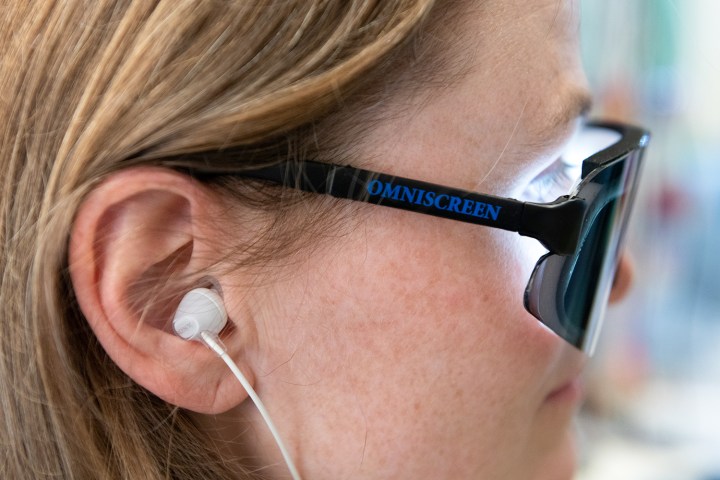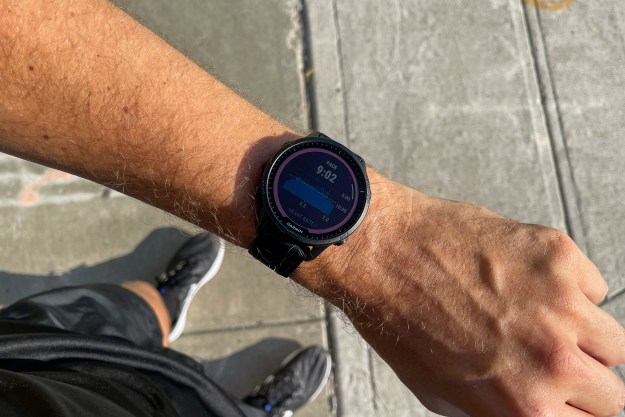
Alzheimer’s is a lot of things, but it’s most notable for what it’s not. It’s a neurodegenerative disease which affects an estimated 5.5 million people in the United States alone. It’s a debilitating, life-changing disorder that’s intensely cruel in its effects, both to the immediate sufferer and their loved ones. It destroys almost one-third of a brain’s mass, gouging out enormous ravines while piling up heaps of junk amyloid plaques between the neurons. It is not curable.
At least, not yet.

While treatments exist in the form of medication, currently these are capable only of slowing the speed of inevitable, terrible decline. To get this out of the way up top: No, researchers have not yet found a miracle treatment that can stop or, as would be the dream, reverse the onset and progression of Alzheimer’s. But investigators at Georgia Institute of Technology and Emory University have discovered a new a promising — and, by their own admission, distinctly “science fiction” sounding — treatment approach which could one day lead to such a thing.
In lab tests, they have discovered that flickering light pulsed at a very specific gamma frequency, at 40 beats per second, causes brains to release signaling chemicals which can help fight the disease. One of these signaling chemicals activates a type of brain cell called microglia. These specialized cells are the primary immune defense in the brain, acting like trash collectors by clearing out pathogens like amyloid plaque. However, Alzheimer’s stops them working as they should. This proposed treatment could help kick it back into action.

“We engineered the brain’s immune signaling with simple flickering lights, like a strobe light but much faster,” Annabelle Singer, an assistant professor of biomedical engineering at Georgia Tech and Emory, told Digital Trends. “We’ve known for a long time that flickering lights entrain neural electrical activity at the same frequency in visual brain areas. But we did not know that this would trigger immune signaling. Interestingly, different frequencies of light flicker produce different patterns of immune signals. We think understanding the relationship between different types of sensory stimulation and its effects on immune function will be key to developing different therapeutic applications.”
Restarting the brain’s immune system
The researchers experienced their first breakthrough in 2016. That year, they used a relatively new technique called optogenetics to simulate the brains of mice. Optogenetics is a treatment in which light-sensitive genetic code can be added to neurons to make them individually controllable. Using this technique, the researchers were able to demonstrate that light flickered at a gamma frequency helped mobilize microglia in mice engineered to develop amyloid plaques. They did this because they found that mice with amyloid plaques experienced a deficit of gamma electrical activity in the part of the brain required for forming memories.
In their latest work, published this month in the Journal of Neuroscience, they have further demonstrated that similar treatment also prompts a surge of additional small proteins which signal to other cells. The strobe lights, in other words, sound the alarm which stirs an otherwise dormant immune response into action.

“We were very excited to find that visual stimulation triggers changes in immune signaling in about 15 minutes in the brain,” said Levi Wood, assistant professor in Georgia Tech School of Mechanical Engineering. “[This] is much faster than you would typically see by giving a drug, which takes hours to have an effect. Interestingly, we also found that the signaling we induce in the brain is both rapid and decays quickly. We think that the dynamics of this activity has the potential to produce beneficial effects by stimulating an immune response for an appropriate period of time to — for example — clear Alzheimer’s plaques without causing chronic neuroinflammation.”
More esoteric mind expansion practices have promoted gamma waves for years in the form of light and sound meditation for enhancing mindfulness and focus. But the work of researchers including Singer and Wood connects gamma to working memory.

“Finding that gamma electrical activity affects immune cells and immune function in the brain was a big surprise,” said Singer. “Brain immune function and interactions between neurons and immune function are thought to play a major role in many diseases. Understanding these interactions and how to control them could have broad impacts.”
Human trials are underway
At present, the researchers are carrying out a small trial of their pulsed light technique with human Alzheimer’s patients. This is being carried in collaboration with the Emory Brain Health Center, one of the world’s leading brain research centers. Unlike the 2016 mouse research, this study is carried out entirely using non-invasive stimulation. Patients are shown the pulsed light using special glasses. While Singer and Wood don’t have results to announce just yet, these will be revealed in the coming months.
“Data collection from this initial clinical test is wrapping up and we are analyzing and examining the results,” Singer said. “So far, patients report good safety and tolerance of the treatment. We will know more about the effects in the coming months. We are also doing many more studies in animal models to understand how neural activity alters immune function in healthy animals and in disease models.”

As with any medical research, it’s crucial that in-depth studies are carried out before this treatment proceeds further towards the market. There are also, needless to say, significant differences between mice and humans; meaning that what works in one model may not necessarily translate to the other. But the potential upside is enormous. It could also potentially help treat brain immune dysfunction in other conditions such as traumatic brain injury, depression, and schizophrenia.
“The idea that you could use an entirely non-invasive method to change how the brain’s immune system works, to potentially to move it back toward a healthy state in these diseases, would be revolutionary,” Levi said. “The mechanism relating sensory stimulation to brain immune function is a very interesting puzzle.”
Hopefully it is one that they are able to piece together.


